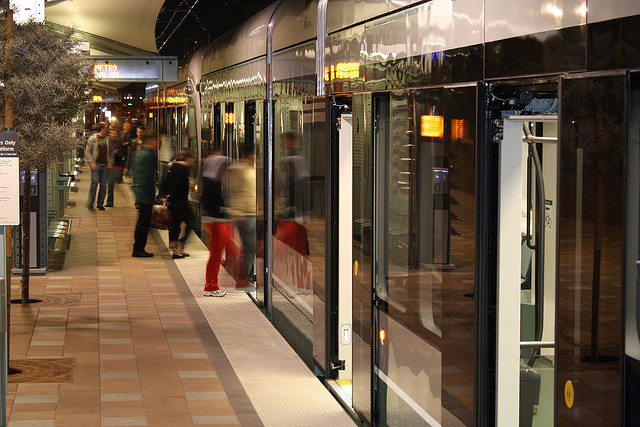Direct democracy can seem at times like a troublesome, unloved child in the family of democratic tools. A major reason may be press accounts of the American state of California which blame direct democracy for that state’s fiscal problems. To learn more, I joined a direct democracy study tour of California, Arizona and Oregon. It turns out that the truth about direct democracy is much more complex, interesting and instructive than press accounts lead one to believe. It can in fact, when thoughtfully designed and implemented, help revitalize and strengthen democracy.
American Western states adopted direct democracy tools at the turn of the last century in an economic and political climate surprisingly similar to today. While powerful business interests dictated policy through their control of the legislature, direct democracy empowered citizens to create laws to help ordinary people. The most frequently used direct democracy instrument, inspired by Switzerland, is the citizens’ initiative. If enough voter signatures can be gathered, an initiative for a proposed law is placed on the ballot. If approved by voters, the law enters directly into effect.
Where it exists, direct democracy is extremely popular with citizens. It’s a way for them to enact laws that legislatures will not consider or cannot pass. Its use has therefore risen or fallen in inverse relationship to popular satisfaction with government, growing markedly in recent decades. Introduced by the political left, it’s since been used frequently by the right. Early on, it introduced women’s suffrage and a minimum wage. More recently, its protected wildlife, built light rail, limited terms for elected officials, both reinstated and banned capital punishment and much more.
A state’s laws and regulations governing its direct democracy tools, combined with its surrounding political culture, result in very different outcomes. Direct democracy thus looks very different in California, Arizona and Oregon, not to mention Switzerland and other areas where it’s used. It functions best where direct democracy (citizens) and indirect democracy (legislators) work together, as well as when it can be used by both the political right and left.
California’s direct democracy system is at once highly atypical and deeply flawed. It was created by, and helps perpetuate, an unusually confrontational political culture. Only in California are laws created by direct democracy outside the normal “checks and balances” of government. They cannot be modified by the legislature, only by voters. Starting in the late 1970s, as direct democracy has been used for issues of taxation and government spending, its impact on the budget has been disastrous.
Arizona, despite ethnic tensions and political corruption, has a surprisingly vibrant direct democracy system. Initiatives from a range of political ideologies have made it into law. Initiatives to create new government programmes must also create a new revenue source (PAYGO) so they don’t impact budgets. Strong transparency laws for funding help limit the corrupting role of big money.
Once an inspiration for the rest of the country, Oregon’s system of direct democracy was nearly killed by bitter partisanship. Unable to achieve their goals through the legislature, minority party (Republican) interests turned to direct democracy. The majority party (Democrats) retaliated with technical restrictions on the direct democracy tools themselves. Resulting increased costs have ironically made it impossible for all but the wealthiest groups to sponsor initiatives. Fortunately, the new Oregon Citizens’ Initiative Review (CIR) provides a constructive way to improve direct democracy. It uses the rigorous deliberation of a neutral citizens’ jury to analyse an initiative and create a one-page summary of its strengths and weaknesses. Scientific research shows that voters who read it make more thoughtful voting decisions.
Direct democracy in America states is beset by many of the same problems that plague indirect (representative) democracy there — the corrupting role of money, blatant manipulation of public opinion and use of political “dirty tricks”. These are not inherent in direct democracy. Election regulations and the design of direct democracy tools can however encourage or discourage some of these practices.
I used to be a direct democracy sceptic. However I didn’t realize how many different ways exist to design, regulate and use direct democracy instruments, each of which will result in different outcomes. California’s direct democracy should in no way be considered a classic example or model to follow. As Arizona shows, when carefully designed, direct democracy can help keep democracy vibrant and relevant to citizens by providing a channel for issues the legislature ignores. Oregon’s CIR demonstrates an exciting new way deliberative democracy may be used to strengthen direct democracy. What can seem at times like a troublesome, unloved child may actually, once given the right environment, be a bright star in the democracy family.
To learn more about what direct democracy in the American West can teach democracy reformers around the world, please see this short briefing paper: “Direct Democracy: Constructive People Power or Weapon of Mass Destruction? Lessons from the American West”.
Article first appeared on Involve on January 6, 2012.
Photo: Michael Ruiz, Phoenix light rail which was created by a citizens’ initiative
